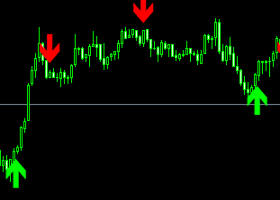
Entering the world of FX trading can be both exciting and overwhelming, especially if you're a beginner. The potential for significant returns is enticing, but without the right preparation, you could be setting yourself up for failure. This guide will walk you through three essential steps that every beginner should take before diving into the world of FX trading. These steps are designed to help you minimize risks and increase your chances of success.
Step 1: Acquire Basic Knowledge
Before you even think about placing your first trade, it's crucial to understand the basics of FX trading. The FX market operates by buying and selling currency pairs, and understanding these pairs, as well as how they interact, is fundamental to your success.
Understanding Currency Pairs
In FX trading, you're dealing with pairs of currencies, such as USD/JPY, EUR/USD, or GBP/USD. Each currency pair has its own characteristics and behaves differently based on various economic factors. By studying these pairs, you'll be able to make informed decisions and manage your risk more effectively.
Leverage and Margin
One of the most attractive features of FX trading is leverage, which allows you to control large positions with a relatively small amount of capital. However, leverage is a double-edged sword. While it can amplify your profits, it can also magnify your losses. It's essential to learn how to manage leverage and margin to protect your capital.
Using Indicators
Indicators like moving averages and Bollinger Bands are vital tools for analyzing market trends. These indicators can help you identify potential entry and exit points in the market, giving you a strategic advantage. Make sure you understand how to use these tools before you start trading.
Understanding Trading Hours
The FX market is open 24 hours a day during the week, but it’s crucial to know the best times to trade. Major trading sessions occur in Tokyo, London, and New York, and each session has its own characteristics. Understanding these trading hours and planning your schedule accordingly can make a significant difference in your trading success.
Step 2: Practice with a Demo Account
Once you've grasped the basics, it's time to put your knowledge to the test using a demo account. A demo account allows you to trade in a simulated environment without risking real money. This step is crucial for beginners, as it gives you the opportunity to practice your strategies and understand the mechanics of trading without the pressure of losing money.
Benefits of Demo Trading
Demo accounts offer several benefits, including risk-free practice, real market conditions, and a safe space to learn the trading platform's features. By trading in a demo account, you can familiarize yourself with the trading environment and build confidence in your strategies.
Limitations of Demo Accounts
However, it’s important to remember that success in a demo account doesn’t necessarily translate to success in live trading. Demo trading lacks the emotional impact that comes with trading real money. The psychological pressure of risking real capital can lead to different decision-making processes, which is why it’s essential to transition cautiously from demo to real trading.
Avoiding Overconfidence
One of the biggest risks of demo trading is overconfidence. Just because you’ve had a few successful trades in a demo account doesn’t mean you’re ready to trade live. Many beginners make the mistake of jumping into real-money trading too soon, only to face significant losses. Take your time to refine your strategies and develop a solid risk management plan before going live.
Step 3: Practice with a Trading Simulator
After you’ve gained confidence in a demo account, the next step is to use a trading simulator. A trading simulator allows you to practice in a more realistic market environment, where you can test advanced strategies and refine your skills.
Replaying Scenarios and Testing Strategies
One of the key benefits of a trading simulator is the ability to replay trading scenarios and test different strategies. This feature allows you to see how different approaches would have played out in real market conditions, helping you to fine-tune your strategies for better results.
Advanced Features and Real-Time Analysis
Trading simulators often come with advanced features such as real-time profit and loss tracking, speed control, and the ability to pause and resume trading. These tools give you the ability to analyze your trades in detail and improve your risk management skills.
Preparing for Live Trading
Using a trading simulator helps bridge the gap between demo trading and live trading. It provides a more advanced level of practice, allowing you to make the transition to real-money trading with greater confidence and preparedness.
Conclusion: Ready for Real Trading?
By following these three steps, you’ll be well-equipped with the knowledge, skills, and confidence needed to succeed in the FX market. Remember, the key to successful trading is not just knowledge, but also the discipline to apply what you’ve learned consistently.
Product Introduction: PracticeSimulator
To help you master these steps, we recommend using PracticeSimulator. This advanced trading simulator offers a realistic market environment where you can practice without the risk of losing money. With features like speed control, real-time profit and loss tracking, and scenario replay, PracticeSimulator is the perfect tool for refining your strategies and preparing for real trading.
Why You Need It: Start your journey to becoming a successful trader with PracticeSimulator. Gain the skills and confidence you need to succeed in the real market—all while practicing in a safe, risk-free environment.
Ready to Elevate Your Trading?
Try PracticeSimulator now and experience risk-free, multi-timeframe analysis firsthand. Click here to start your free demo today!






